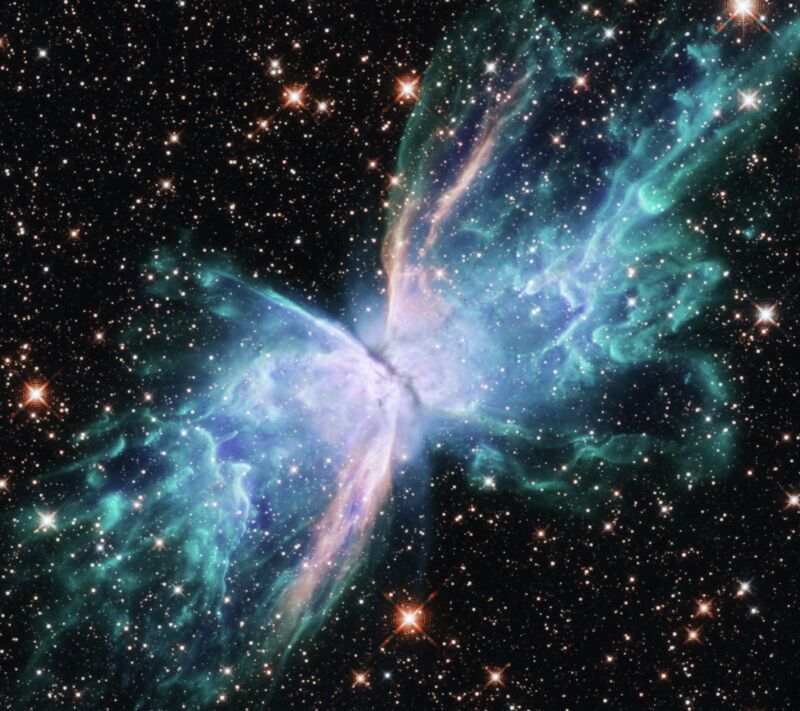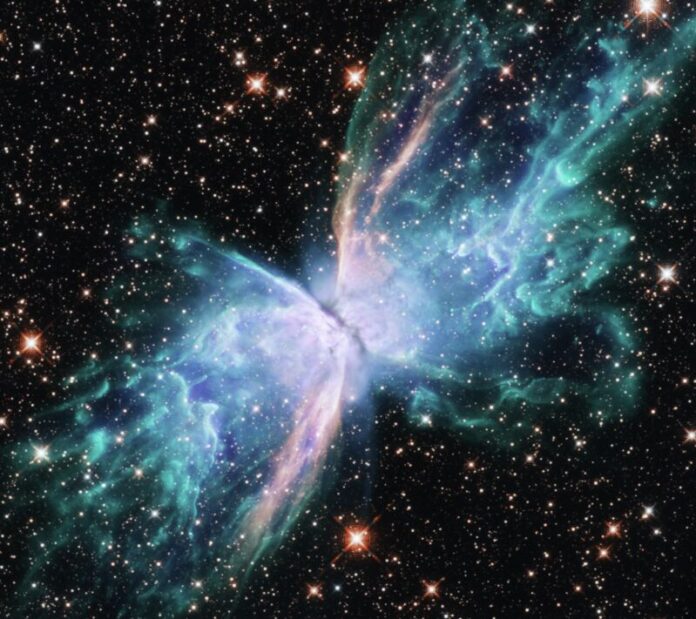
Enlarge / The Butterfly Nebula, located just under 4,000 light-years from Earth in the constellation Scorpius, is a striking example of a planetary nebula, the end stage in the evolution of a small- to medium-sized star. The butterfly’s diaphanous “wings” consist of gas and dust that have been expelled from the dying star and illuminated from within by the star’s remaining core. The nebula’s symmetrical, double-lobed shape is a telltale sign that a companion star helped shape the outflowing gases. Both the primary star and its companion are hidden by the shroud of dust in the nebula’s center. (credit: NASA , ESA , and J. Kastner (RIT))
Billions of years from now, as our Sun approaches the end of its life and helium nuclei begin to fuse in its core, it will bloat dramatically and turn into what’s known as a red giant star. After swallowing Mercury, Venus, and Earth with hardly a burp, it will grow so large that it can no longer hold onto its outermost layers of gas and dust.
In a glorious denouement, it will eject these layers into space to form a beautiful veil of light, which will glow like a neon sign for thousands of years before fading.
The galaxy is studded with thousands of these jewel-like memorials, known as planetary nebulae. They are the normal end stage for stars that range from half the Sun’s mass up to eight times its mass. (More massive stars have a much more violent end, an explosion called a supernova.) Planetary nebulae come in a stunning variety of shapes, as suggested by names like the Southern Crab, the Cat’s Eye, and the Butterfly. But as beautiful as they are, they have also been a riddle to astronomers. How does a cosmic butterfly emerge from the seemingly featureless, round cocoon of a red giant star?
Read 21 remaining paragraphs | Comments
Ars TechnicaContinue reading/original-link]




